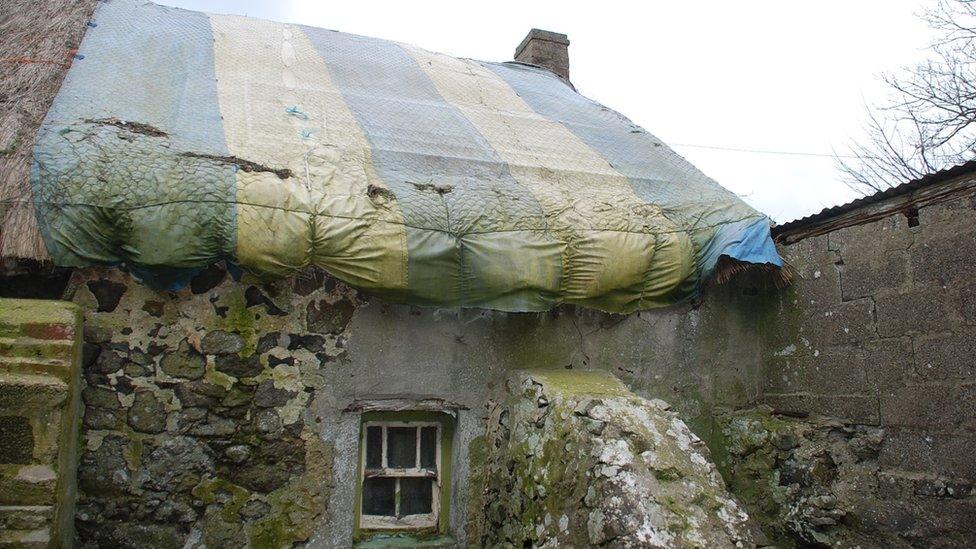Thatched cottage: 'It feels like another world living in one'
- Published
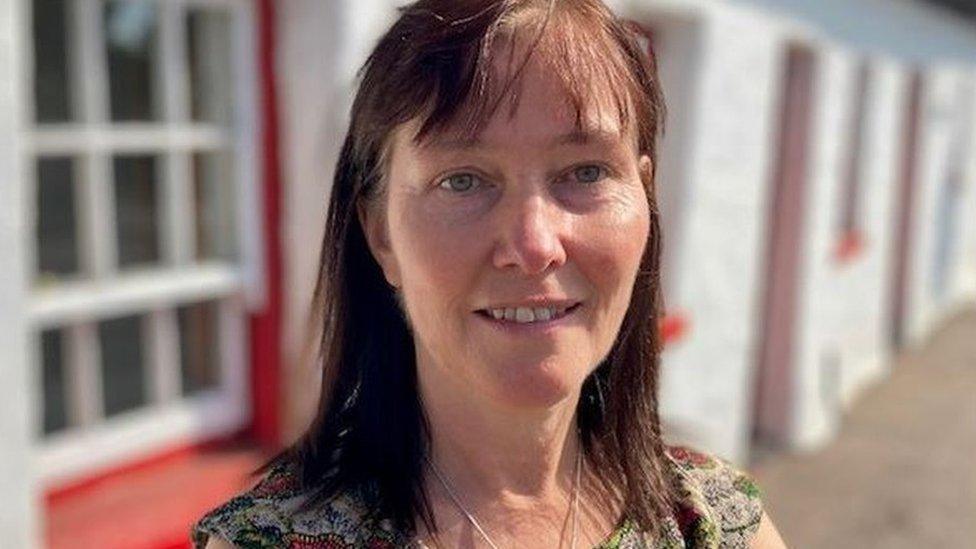
Liz McArdle's cottage has a thatched roof - one of only a few left in Northern Ireland
"It feels like you're in another world and I guess you are in so many ways."
Liz McArdle and her family live in a rare and unusual home, one of only a few left in Northern Ireland.
That's because her white-walled cottage in Lisburn close to the M1 has a thatched roof.
In the 1950s there were about 40,000 thatched buildings in Northern Ireland, but today there are fewer than 180 and only 74 of them are homes.
That information is contained in the first survey of thatched buildings in 15 years, carried out by the Department for Communities (DfC).
According to the survey, swathes of Northern Ireland have no thatched buildings left.
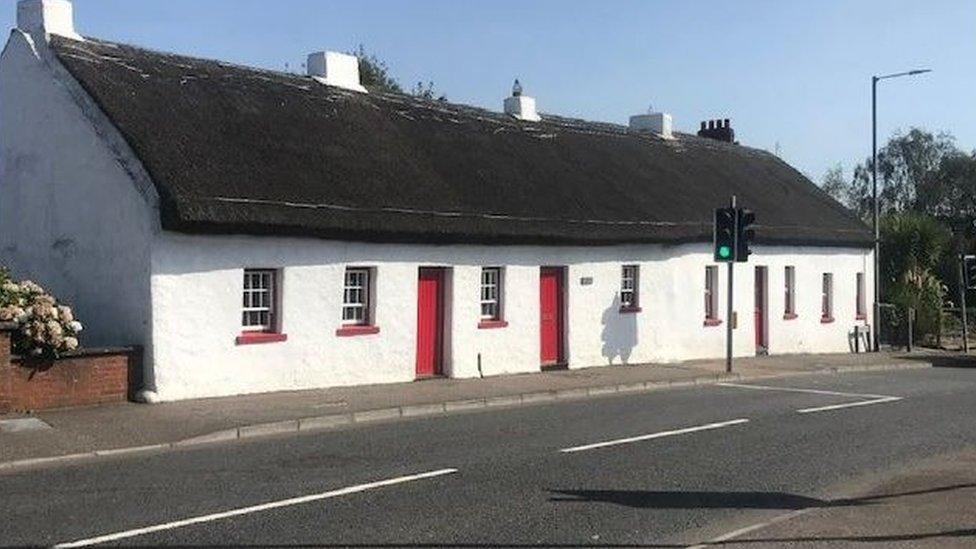
The McArdle's cottage is near the motorway - but the noise is kept out by the thatched roof
"They are totally absent in the Glens of Antrim and Rathlin for instance where they were common to quite a recent date," the survey said.
"Indeed, none exist to the east of a line between Portballintrae and Broughshane.
"All are gone from South Ards and Lecale and only a very few survive in the Mournes.
"They have disappeared from large area of counties of Derry/Londonderry and Tyrone."
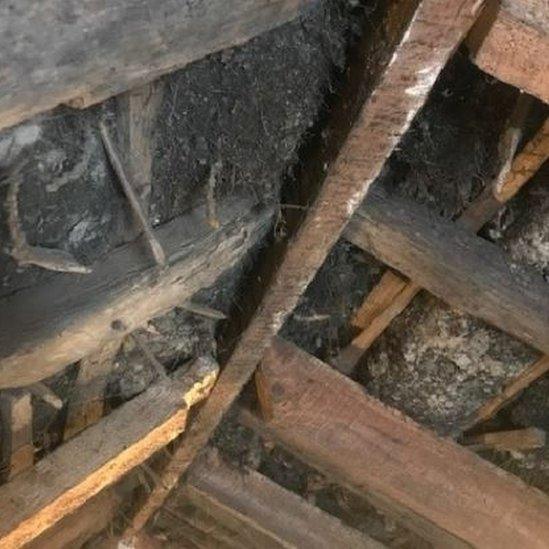
From the inside of the cottage you can see the intricate thatching
Ms McArdle's thatched Lisburn home has quite a history.
It is more than two centuries old and was once the toll house in Lisburn, where travellers paid to use the then main road to and from Belfast.
She admits that, at first, she wondered what she had taken on.
"The early years, particularly, people were advising us to get rid of the thatched roof and it would only be manageable if you put a slate roof on it," she told BBC News NI.
"So it was hard to work out in the early stages what were we going to do with it?"
'It's like a modern cave'
As thatched rooves are commonly made of straw or reeds with sods underneath they often need repairing or rethatching every seven or eight years.
But as almost every thatched property in Northern Ireland is a listed building, DfC provides grants to help owners with the cost.
Ms McArdle said the benefits of a thatched roof far outweigh the potential drawbacks, especially at a time when there is an emphasis on the environment.
"As we see climate chaos and crisis, we're living in something that holds the heat in the winter and keeps cool in the summer," she said.
"So it's like a cave inside but a modern cave as it were, but we would expect that this is going to be the perfect solution for a home in the future."
She said that the roof kept out both the rain and the noise from the nearby motorway.
"It probably dampens out lots of the noise of rain that you would get on a normal roof but also it dampens out the noise from the outside," Liz said.
"So it feels like you're in another world and I guess you are in so many ways.
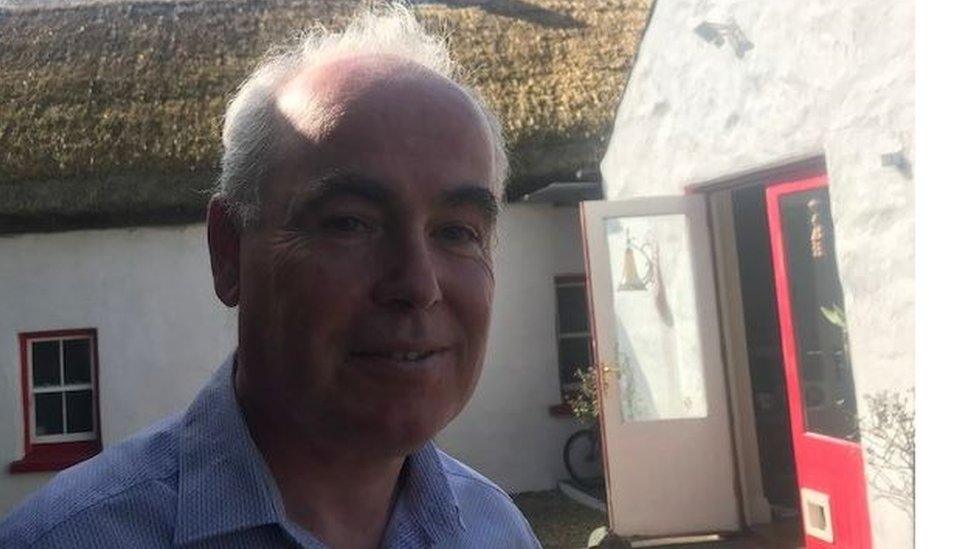
Manus Deery believes that thatched buildings are "a real legacy from the past"
"Historically we love the fact that this is well known and it adds to the feeling of Lisburn being an historic city."
Manus Deery, a conservation architect with the Department for Communities, believes that thatched buildings are "a real legacy from the past".
"We owe a great debt of gratitude to the people who live in these buildings and look after them," he said.
"They're such beautiful contributions to our historic environment and to our environment generally."
Asbestos sheeting
But the protection of thatched buildings is not always easy.
Of the 178 buildings DfC identified in the survey, just over half were in good or very good condition.
In 34, the thatch had been covered with corrugated iron or asbestos sheeting.
More than 70 buildings were "recorded as vacant or deemed not to be in use and therefore very vulnerable to ongoing decay".
The survey also identified a number of problems in trying to protect the dwindling number of thatched buildings.
That includes a shortage of skilled thatchers, obtaining traditional materials, some buildings falling into disrepair and issues with insurance.
But Mr Deery said that thatched buildings are not just museum pieces but have an important role to play in the modern world.
"These buildings are ideally adapted to our climate and our conditions, they've evolved," he told BBC News NI.
"They're vernacular buildings - they weren't built by architects, they were built by people testing out one thing and another thing over centuries.
"They use materials found locally and so they have lessons to teach us for the future."
"They're warm and cosy places inside."
He said occupants were so well insulated that they wouldn't even hear a storm from inside.
"These buildings are not just beautiful outside but often treasure troves of our past in a way that very few other things are so they're really important to protect for the future."
Related topics
- Published26 May 2019
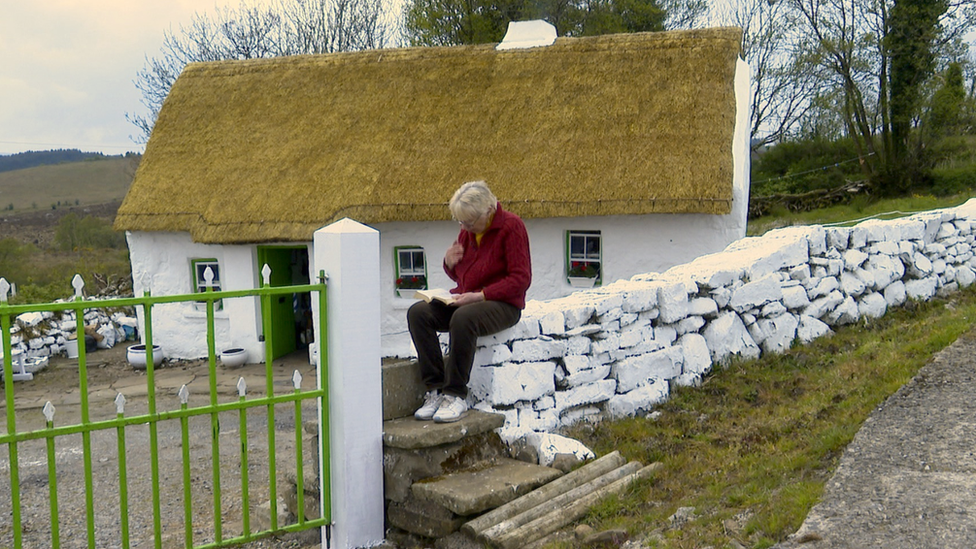
- Published10 August 2017
